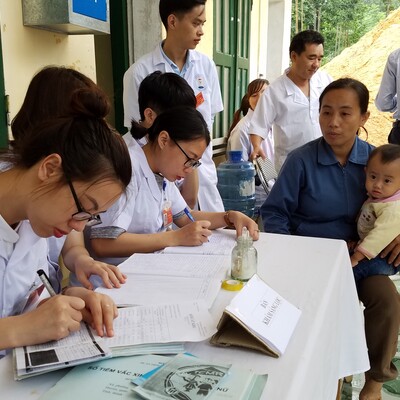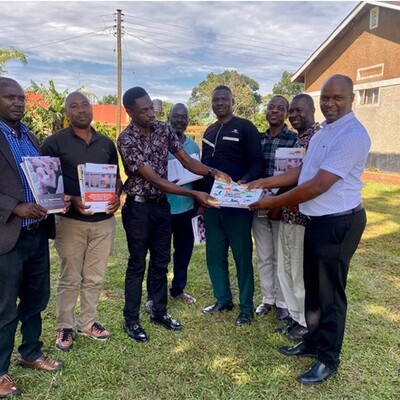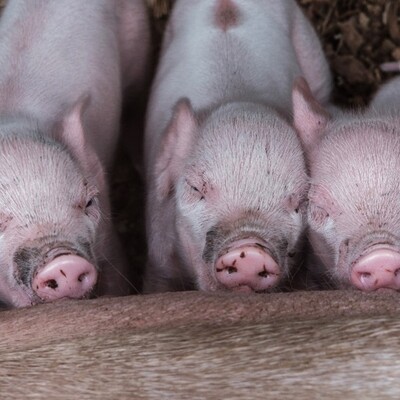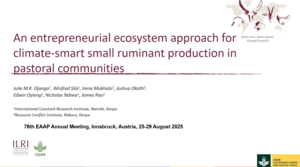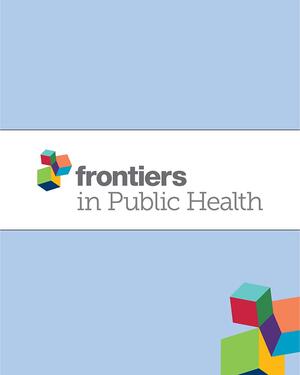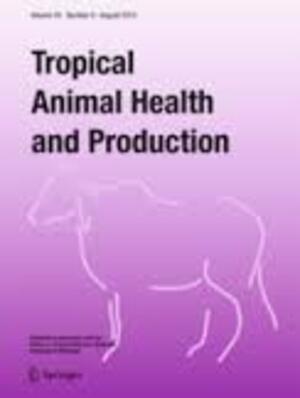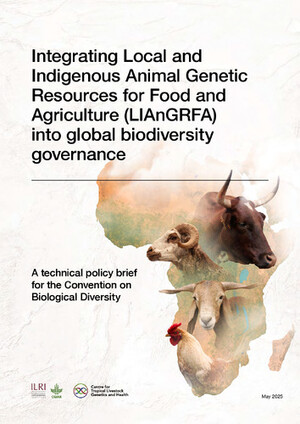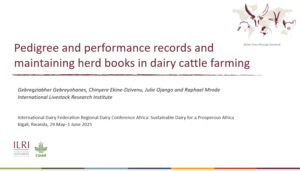
A 360-degree ‘immersive dive’ into Uganda’s smallholder pig sector
This article is written by Brian Kawuma, communications officer for ILRI in Uganda and for ILRI’s Policies, Institutions and Livelihoods program.

Lindsay Falvey, chair of the ILRI Board of Trustees, watches ILRI’s first 360-degree video, which showcases the work of its Smallholder Pig Value Chains Development Project in Uganda (photo credit: ILRI).
As part of a quest by the International Livestock Research Institute (ILRI) to pilot new technologies for better communication of its work, the institute’s Capacity Development Unit recently worked with scientific and staff based in Uganda to produce CGIAR’s first-ever 360-degree video, which offers glimpses into an ordinary day in the life of a Ugandan pig farmer, trader and consumer.
‘We’re always looking at how new technologies can enhance our work. We saw an opportunity to use 360-degree videos to provide visitors to our campuses in Kenya and Ethiopia with “immersive virtual visits” to other regions where ILRI works,´ said Iddo Dror, head of ILRI’s Capacity Development Unit.
360-degree filming
Three-sixty–degree videos record views in every direction at the same time. During playback, viewers have control over what they look at in the panoramas they find before them. In the words of CGIAR communications officer Manon Koningstein, ‘Our audience can experience a story straight from the field, to better understand it and, we hope, to be provoked to act on the experience. The idea is to involve the audience more to make them feel more.’

Mr Okurut, a pork trader from Mukono district, attended a participatory butcher training conducted by ILRI in Mukono, Uganda in 2016 (photo credit: Manon Koningstein).
Pig value chain development project in Uganda
Pig production is a major and increasing source of livelihoods for more than 1.1 million households in Uganda, where consumption of pork meat is rising rapidly. The explosion in small-scale pig keeping and the (largely informal) processing and selling of pork products in Uganda is considered by experts to have high potential for raising both incomes and nutrition in households across country. With funding from an International Fund for Agricultural Development and European Commission partnership as well as Irish Aid, the CGIAR Research Program on Livestock, an ILRI-led joint program of five research and development organizations, has implemented a Smallholder Pig Value Chains Development project in five districts of Uganda.
A 360-degree short video shot in Masaka and Mukono, two of the five districts, includes interviews with pig farmers and pork butchers as well as district government officers.

Beatrice Nabitiri, a pig farmer, tries out the 360-degree camera using a gimbal, a pivoted support that allows the camera to rotate about a single axis, at her farm in Masaka, Uganda (photo credit: Manon Koningstein).
Taking ILRI communications to a new level
The first showing of this video, to the ILRI Board of Trustees in October 2017, was well received.
´We’re delighted to have produced CGIAR’s first 360-degree video, which introduces viewers to Uganda’s vibrant smallholder pig sector´, says Dror. ‘We’d like to produce a few more such videos to capture the breadth of ILRI’s pro-poor livestock-research-for-development field and lab work. As the technology advances, we may look into virtual reality and augmented reality add-ons as well.’
Watch the short 360-degree video: Step into the Uganda Pig Value Chain Project (run-time is 4 minutes 30 seconds). Once the video starts running, click and hold the arrows in the grey-coloured circle at top left to view different parts of the panorama.






